If you’re a backcountry skier you might have winch envy. If not now, wait till you’re at a trailhead by yourself, in January, so stuck in the snow that no amount of shoveling will get you out. Do you walk out 12 miles for help, or do you happen to have an electric motor hooked up to spool of rope? We like the electric motor idea, so I always try to run a winch in our various vehicles. Problem is, most winches are expensive and in any case you need a mounting system. We roll big bumper pickup trucks and Jeeps here at WildSnow World HQ, so mounting isn’t a problem. But price is always an issue. More, winches can be notoriously unreliable — especially if you only use them once or twice a year and let them sit there and corrode the rest of the time.
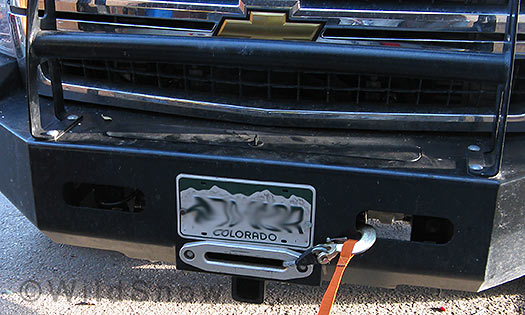
El cheapo installed. It's not the right winch for 12 hours on a Moab classic trail, but perfect for occasional use for backcountry skiing and climbing access.
You can find winches priced for occasional use. But reliability becomes an even greater concern with the cheapos. Case in point: We mounted a relatively inexpensive Tabor in our previous truck, swapped it out once on warranty after it failed, then went to use the replacement a few months later and it was as dead and cold as the old parking lot ice we were spinning our tires on. I consulted my 4×4 guru at CODE. He said “don’t get your hopes up, we’ve even been having problems with reliability of the more pricey models.”
“Well,” I said, “I’ve been running that low budget Harbor Fright type winch on our Jeep for years now, and it always fires up.” Guru response? “Get another one.” So we did.
These days, you can get a “10,000” pound rated winch at Harbor for around $400.00. That’s compared to prices easily over $1,000 for anything else. Downside? Slow line speed, and a duty cycle of only a minute or so before you need four or five minutes of cooling. More, we doubt the Harbor Freight wonder can really haul 10,000 lbs on a single line pull. But set up with a snatch block for 2/1 mechanical advantage, it is all you need to get just about any normal SUV or pickup unstuck at a trailhead, or rolled through a snow plug on a springtime road approach.
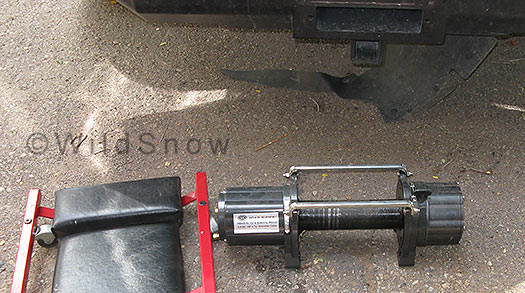
Ready for the install. Wire rope is removed because I swap synthetic rope to all my winches. Fiber rope is safer, saves a ton of weight, and is easier to handle -- well worth the cost.
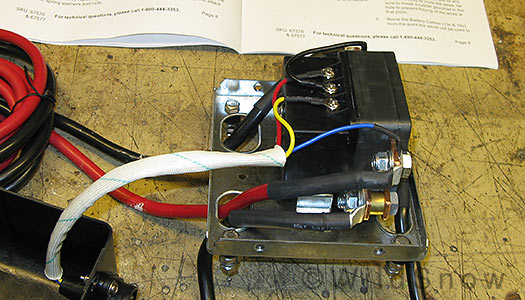
Surprisingly, this budget winch actually has more quality than our Tabor that cost twice as much and didn't work. For example, the solenoid pack (pictured) is a nice weather sealed unit that'll be easy to swap out if it fails (a common occurrence with winches).
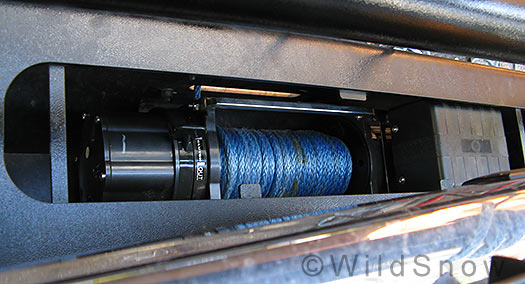
Looking from above bumper though the bumper access port, installation complete, spooled with synthetic line.
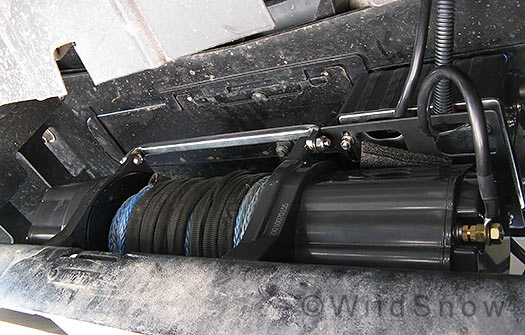
Looking at the completed install from the ground, facing to front of truck. Only problem with this is winter road salt damage. To prevent that, it's necessary to use lots of silicone grease and judiciously applied duct tape to keep water out of cracks. Some sort of winch cover can help, but covers trap moisture and can even make things worse. I've heard that with these Harbor Freight models, it's a good idea to take the cover off the gear case and pack more grease in to prevent water damage. Perhaps we'll do that. For now, it's working and ready for backcountry skiing adventures!
Note, if you’re new to winching remember you’ll need a snatch block pulley, tree saver strap, and leather gloves for handling the wire rope. It is also advisable to read up on winch technique and safety, or even take a backcountry vehicle recovery class. Also note that winches similar or identical to the Harbor Freight model are sold rebadged by companies such as Mile Marker and Ramsey. If the price is right, they’re worth considering as well. Just remember these winches are designed for occasional use and have a short duty cycle, and may need some weather protection if they’re left just sitting there on you bumper year after year.
WildSnow.com publisher emeritus and founder Lou (Louis Dawson) has a 50+ years career in climbing, backcountry skiing and ski mountaineering. He was the first person in history to ski down all 54 Colorado 14,000-foot peaks, has authored numerous books about about backcountry skiing, and has skied from the summit of Denali in Alaska, North America’s highest mountain.
